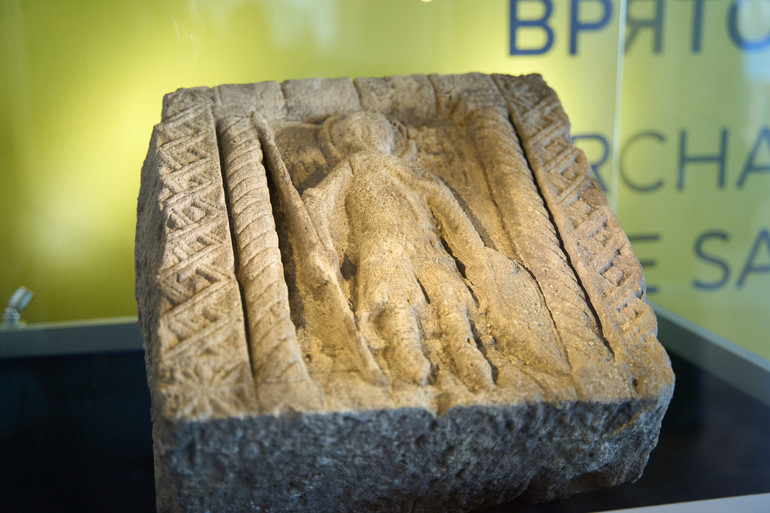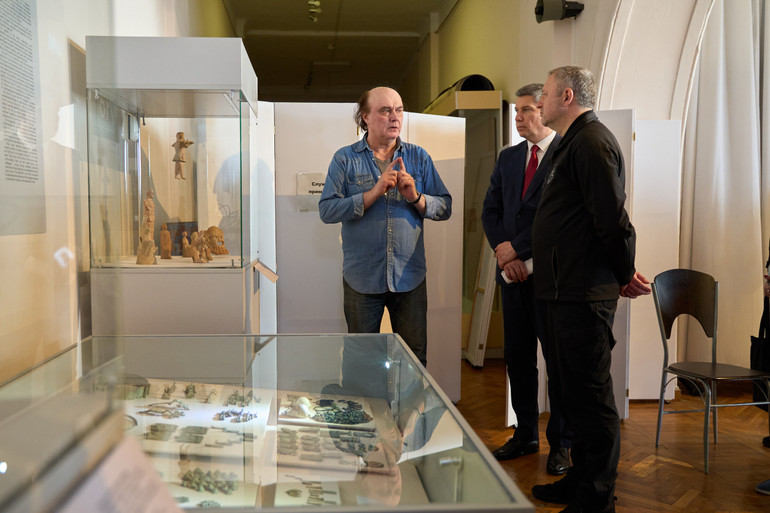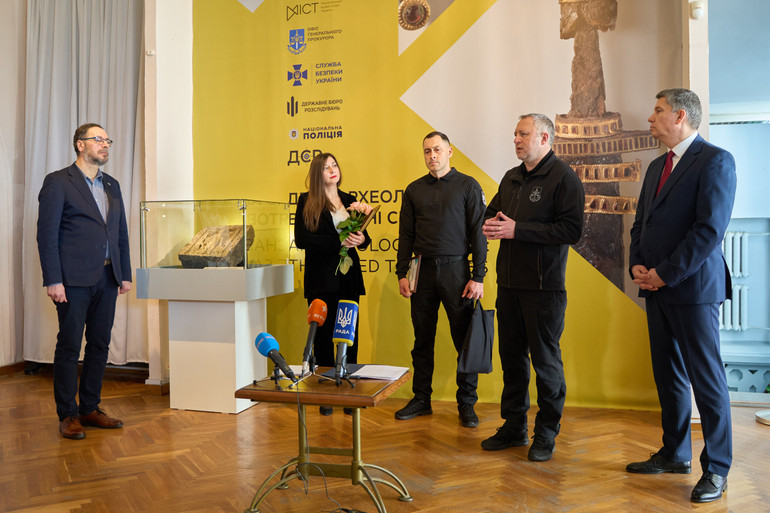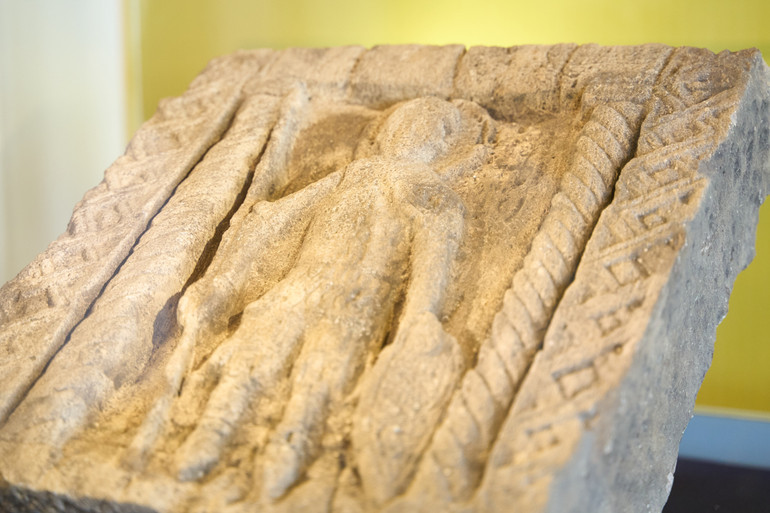The plate from the time of Kyivan Rus was handed over to the National Museum of the History of Ukraine
[ad_1]
Plate from the time of Kyivan Rus. Next to him is the director of the National Museum of the History of Ukraine Fedir Androschuk
Office of the Prosecutor General
On Wednesday, March 27, the National Museum of the History of Ukraine handed over a stone slab from the times of Kyivan Rus with the image of a guardian angel, which prosecutors together with law enforcement officers and museum workers were able to save from illegal sale.
About this reported Office of the Prosecutor General.
They tried to sell the artifact with the probable image of St. Dmitri at an online auction for 210,000 hryvnias. The Lutsk District Prosecutor’s Office responded in a timely manner to the statement of the Director General of the National Museum of the History of Ukraine Fedor Androschuk and started a criminal case.

A stone slab with a probable image of Saint Dmitri
Office of the Prosecutor General
“Thanks to the efforts of prosecutors and investigators during the search, the stove was seized, it was recognized as physical evidence and arrested by court order. Today we hand over this find to the museum for safekeeping“, said Prosecutor General Andriy Kostin.
According to the director of the museum, the salvaged plate is a unique object of art and architecture. Sculptural decoration in the Romanesque style adorned the temple on the territory of the Galicia-Volyn principality. It was built in the period of the second half of the 12th – the first half of the 13th century. The souvenir weighs about 60 kilograms.

The ceremony of handing over the monument to the National Museum of the History of Ukraine
Office of the Prosecutor General
“A number of holy warriors were probably depicted on the facade of the still unknown church. This monument depicts Saint Dmitri, who was honored in Greece, Bulgaria and Russia. Unfortunately, almost no churches with ornamented facades have survived from this time, and this is the uniqueness of the plate“, Fedir Androschuk said.
He also thanked the employees of state bodies – the head of the Volyn Regional Prosecutor’s Office Viktor Tymchuk and the prosecutor of the Lutsk District Prosecutor’s Office Svitlana Nedumova for their contribution to the preservation of Ukrainian archaeological heritage.
According to Tymchuk, at the time the criminal proceedings were initiated, the online auction had already been stopped, so it was difficult to track the movement of the plate. The search case lasted two years, and the pre-trial investigation into the appropriation of the artifact is still ongoing.

The ceremony of handing over the monument to the National Museum of the History of Ukraine
Office of the Prosecutor General
As the Office of the Prosecutor General emphasizes, over the past three years, the National Police and SBU have investigated more than 300 crimes related to kidnapping, illegal trade, and smuggling of monuments. At the monument handover ceremony, attention was also drawn to the fact that the National Museum of the History of Ukraine stores about 9,000 archaeological objects, which were handed over to the Prosecutor General as part of various criminal proceedings. There are many more of these artifacts than have been added to the museum’s collections over the past 40 years.
About the stone slab of the times of Kyivan Rus
Earlier in the comment UP. Life archaeologist Maxim Levada explained that this plate could be the work of a Byzantine master, but more often such objects are found in the Crimea or in Western Europe.
“Most likely, it was made by craftsmen who served Christian churches that had just begun to be built. The limestone from which the slab is made indicates that it was made precisely in the Halych-Volyn principality: in Halych, Volodymyr, Lutsk or some other princely city.
This plate is perfectly preserved. It has inscriptions in Greek. Such slabs were usually created for temples, but the size of this one may indicate that it was made for an annex chapel dedicated to the saint“, the archaeologist said.

A stone slab from the time of Kievan Rus
Office of the Prosecutor General
According to him, in the 13th century, an average person could not order such a product. Such slabs were usually gifts that were often built into the walls.
“It should not be ruled out that the prince himself could have ordered it. But this is only an assumption,” says Maxim Levada.
[ad_2]
Original Source Link











